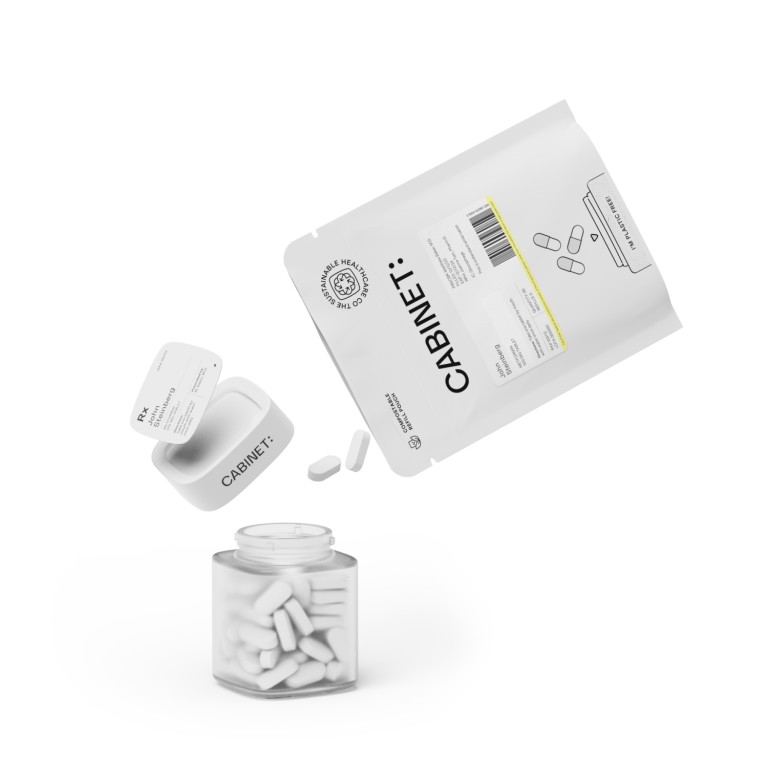Attention Deficit Hyperactivity Disorder (ADHD) is a neurodevelopmental disorder that affects both children and adults. This condition is characterized by inattention, hyperactivity, and impulsivity. While behavioral therapy and lifestyle modifications play an important role in managing ADHD, medication is often prescribed to help alleviate symptoms. Two commonly prescribed medications for ADHD are Atomoxetine and Adderall. In this article, we will delve into the details of these medications, their mechanisms of action, potential side effects, and who may benefit from their use.
Understanding ADHD and Its Medications
The Role of Medication in ADHD Management
Medication is an important component in the comprehensive management of ADHD. It works by targeting the underlying chemical and neurological imbalances in the brain, helping individuals with ADHD improve their focus, attention, and impulse control. However, it's important to note that medication alone does not cure ADHD. It is typically prescribed alongside behavioral therapy, educational support, and lifestyle modifications to help individuals effectively manage their symptoms.
When it comes to ADHD management, medication plays a crucial role in helping individuals regain control over their lives. By addressing the chemical imbalances in the brain, medication can significantly reduce the symptoms of ADHD, allowing individuals to focus better, stay organized, and control impulsive behaviors. This, in turn, can lead to improved academic performance, better social interactions, and enhanced overall well-being.
It's worth mentioning that the decision to use medication for ADHD management is a personal one and should be made in consultation with a healthcare professional. They will consider various factors, such as the severity of symptoms, the individual's medical history, and any potential contraindications before prescribing medication.
Commonly Prescribed ADHD Medications
Atomoxetine and Adderall are among the most commonly prescribed medications for ADHD. Both medications have been approved by the Food and Drug Administration (FDA) for the treatment of ADHD in children, adolescents, and adults. While they share the common goal of symptom management, Atomoxetine and Adderall differ in their mechanisms of action, potential side effects, and ideal candidates.
Atomoxetine, also known by its brand name Strattera, is a selective norepinephrine reuptake inhibitor (SNRI). It works by increasing the levels of norepinephrine in the brain, which helps regulate attention and impulse control. This medication is often preferred for individuals who cannot tolerate stimulant medications or have comorbid conditions, such as anxiety or tics.
On the other hand, Adderall is a combination of amphetamine salts that stimulate the release of dopamine and norepinephrine in the brain. This increased neurotransmitter activity enhances focus and attention. Adderall is commonly prescribed for individuals who have not responded well to other medications or have more severe symptoms of ADHD.
It's important to note that both Atomoxetine and Adderall may have potential side effects, such as decreased appetite, sleep disturbances, and increased heart rate. These side effects are typically mild and can be managed with proper monitoring and dosage adjustments.
When considering medication options for ADHD, healthcare professionals take into account various factors, including the individual's age, medical history, and any potential drug interactions. They work closely with patients to find the most suitable medication and dosage to effectively manage symptoms while minimizing side effects.
An In-depth Look at Atomoxetine
Welcome to this in-depth exploration of Atomoxetine, a medication commonly used to treat Attention Deficit Hyperactivity Disorder (ADHD). In this article, we will delve into how Atomoxetine works, its potential side effects, and who should consider using it as a treatment option.
How Atomoxetine Works
Atomoxetine belongs to a class of medications known as selective norepinephrine reuptake inhibitors (SNRIs). Its primary mechanism of action involves increasing the levels of norepinephrine in the brain. Norepinephrine is a neurotransmitter that plays a crucial role in regulating attention, focus, and impulse control.
By selectively inhibiting the reuptake of norepinephrine, Atomoxetine allows this neurotransmitter to remain in the synaptic cleft for a longer duration, enhancing its availability for neuronal communication. This increased availability of norepinephrine helps improve the core symptoms of ADHD, including inattention, hyperactivity, and impulsivity.
It is important to note that Atomoxetine does not directly affect other neurotransmitters, such as dopamine, which are also involved in ADHD. This distinguishes Atomoxetine from stimulant medications commonly used to treat ADHD, which primarily work by increasing dopamine levels.
Potential Side Effects of Atomoxetine
Like any medication, Atomoxetine can cause side effects. It is crucial to be aware of these potential effects and discuss them with a healthcare provider before starting treatment.
Commonly reported mild side effects of Atomoxetine may include nausea, dry mouth, or dizziness. These symptoms are generally temporary and tend to subside as the body adjusts to the medication. However, if these side effects persist or become bothersome, it is important to consult with a healthcare provider.
Although rare, there are more serious side effects associated with Atomoxetine. These may include an increased risk of suicidal thoughts or behaviors, liver problems, or cardiovascular effects. It is essential to closely monitor individuals taking Atomoxetine for any signs of these serious side effects and seek immediate medical attention if necessary.
It is worth noting that the risk of experiencing these serious side effects is relatively low, and healthcare providers carefully weigh the potential benefits against the risks before prescribing Atomoxetine.
Who Should Consider Atomoxetine?
Atomoxetine is often considered as a first-line treatment option for individuals who may have a history of substance abuse or those who do not respond well to stimulant medications. Its unique mechanism of action, which does not involve directly affecting dopamine levels, makes it a suitable alternative for individuals who may be at risk of substance misuse.
Furthermore, Atomoxetine is particularly beneficial for individuals with comorbid conditions such as anxiety or tics. Unlike some stimulant medications, Atomoxetine does not exacerbate these symptoms, making it a preferable choice for individuals with these specific needs.
However, the decision to start Atomoxetine should always be made in collaboration with a healthcare provider. Factors such as an individual's medical history, current medications, and specific needs should be carefully considered to determine if Atomoxetine is the right medication choice.
In conclusion, Atomoxetine is a medication that works by increasing the availability of norepinephrine in the brain, thereby improving the core symptoms of ADHD. While it may cause side effects, including both mild and rare serious effects, Atomoxetine is a valuable treatment option for individuals who may have a history of substance abuse, do not respond well to stimulant medications, or have comorbid conditions. Consultation with a healthcare provider is crucial to assess the suitability of Atomoxetine and monitor for any potential side effects.
Unpacking Adderall
The Mechanism of Adderall
Adderall is a combination medication that contains amphetamine salts. It works by increasing the levels of certain neurotransmitters, including dopamine and norepinephrine, in the brain. By enhancing the activity of these neurotransmitters, Adderall helps improve attention, focus, and impulse control in individuals with ADHD.
Possible Side Effects of Adderall
Adderall, like any other medication, can cause side effects. Some common side effects include increased heart rate, elevated blood pressure, decreased appetite, or difficulty sleeping. It is important to note that each individual may react differently to Adderall, and some individuals may experience more severe side effects such as mood changes, hallucinations, or cardiovascular complications. Regular follow-up with a healthcare provider is essential to monitor for any potential side effects.
Ideal Candidates for Adderall
Adderall is often prescribed to individuals who have not responded adequately to non-stimulant medications or who require a more immediate improvement in their symptoms. It is commonly used in individuals who do not have a history of substance abuse or certain medical conditions that may be contraindicated with stimulant medications. The decision to start Adderall should be made in consultation with a healthcare provider, taking into consideration the individual's specific needs, medical history, and response to other treatment modalities.
Comparing Atomoxetine and Adderall
Efficacy: Atomoxetine vs Adderall
Both Atomoxetine and Adderall have been shown to be effective in managing the symptoms of ADHD. However, individual responses to medications may vary, and what works well for one person may not work as effectively for another. Atomoxetine may be a better choice for individuals who have not responded well to stimulant medications or who have comorbid conditions, whereas Adderall may be more appropriate for individuals who require immediate symptom improvement or who have not responded adequately to non-stimulant options.
Side Effects: Atomoxetine vs Adderall
The side effects of Atomoxetine and Adderall can differ due to their different mechanisms of action. Atomoxetine is generally associated with milder side effects, such as nausea or dry mouth, but it may carry a slightly higher risk of rare but serious side effects. On the other hand, Adderall may cause more pronounced side effects such as increased heart rate or decreased appetite. It is crucial to discuss potential side effects with a healthcare provider and weigh the benefits against the risks before starting any medication.
Cost Comparison: Atomoxetine vs Adderall
When considering the cost of Atomoxetine and Adderall, several factors need to be taken into account. Adderall is available in both brand-name and generic versions, which can affect its cost. Atomoxetine is generally sold as a brand-name medication. Insurances may have different coverage policies for these medications, and healthcare providers can provide guidance on the most cost-effective option based on individual circumstances.
In conclusion, Atomoxetine and Adderall are both effective medications commonly prescribed for ADHD management. They differ in their mechanisms of action, potential side effects, and ideal candidates. The decision to use one medication over the other should be made in consultation with a healthcare provider, taking into consideration individual needs, medical history, and treatment goals. Ultimately, the most effective medication choice will vary from person to person, based on their unique circumstances and response to treatment.








